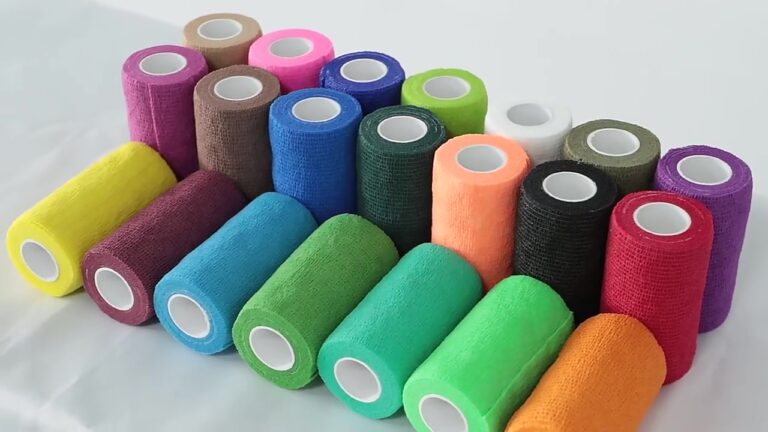What is muscle tape?
“Muscle tape ” is short for “kinesiology tape” and can also be called “sports tape.” Mainly used to relieve muscle pain and support joints, the most commonly used body parts are joints and various muscle tissues such as knees, shoulders, ankles, wrists, fingers, biceps, triceps, shin splints, etc.
It was invented in 1973 by Dr. Kenzo Kase from Japan. It is an elastic tape that can treat sports injuries and other conditions and is now widely used in sports medicine and rehabilitation.
It is common in major sporting events, such as basketball, football, rugby, soccer, volleyball, etc., and many famous athletes are frequent users. Sports enthusiasts are gradually recognizing the benefits of Muscle tape, and its application is spreading to the general public.
Common questions about muscle tape
As Muscle tape becomes more popular among the general public, many questions about it have emerged. These questions can be summarized into the following common issues:
1. Is muscle tape like a medicated plaster? Will the muscle tape irritate my skin?
First of all, Muscle tape itself does not have any medicinal properties. For example, Wemade muscle strapping tape uses an acrylic adhesive with low allergy risk, so users generally won’t have allergic reactions. (Tips: Stop using immediately if any allergic reaction occurs.)
2. Does muscle tape have elasticity?
Muscle tape itself is elastic with a certain degree of stretchability. For example, Wemade muscle strapping tape can be stretched up to 180% of its original length.
3. Is it breathable?
Muscle tape has high breathability and drainage ability. Wemade sports muscle tape uses a unique water ripple adhesive design that increases the tape’s breathability.
4. Can I still take a shower after taping? Will it fall off when wet?
Muscle tape has considerable water resistance (splash resistance). When showering, as long as the taped area is not scrubbed too hard or the edges lifted, it generally won’t fall off. For example, muscle strapping tape can stay on the skin for 2-3 days if it is not misused or has lifted edges.
5. Is there any difference between different colors of muscle tape?
Muscle tape comes in various bright colors, mainly to match athletes’ uniforms and provide psychological support. The elasticity is not affected by the color.
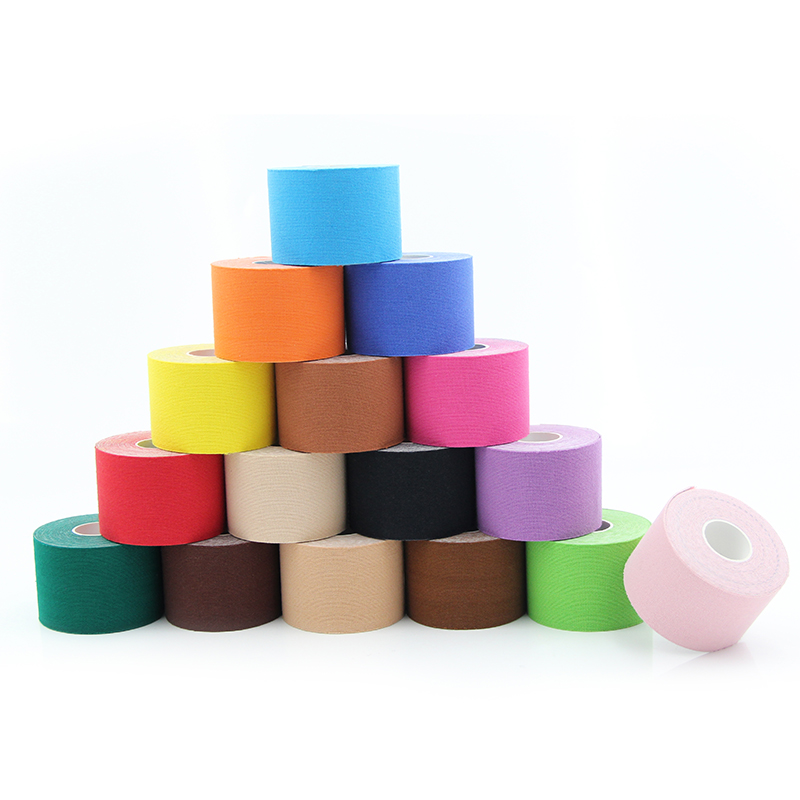
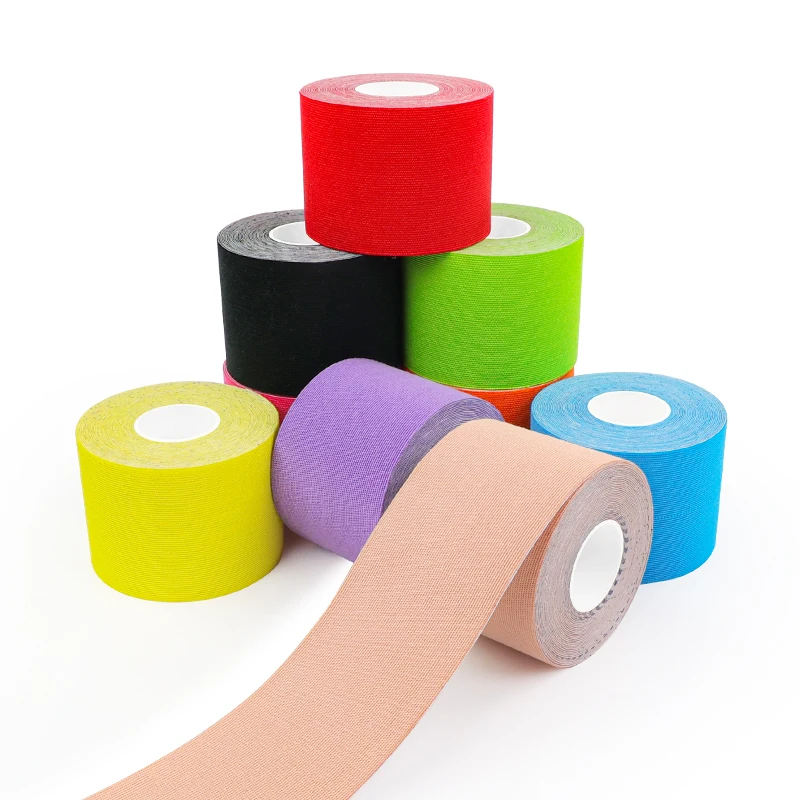
What are the functions of muscle tape?
1. Reduce swelling, improve circulation
The recoil force of the tape can lift the skin to form wrinkles, increasing the space between the skin and subcutaneous tissues. This affects the flow of the fascial system, enhancing permeability and circulation of the lymphatic and blood flow.
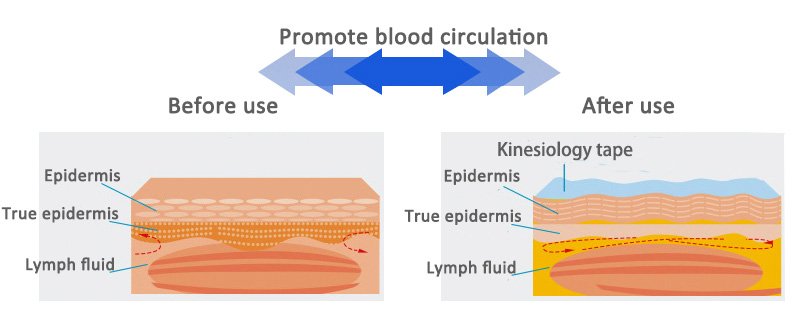
2. Support and relax muscles
When taping, muscle strapping tape is usually applied across joints and muscles. The joint area being taped is generally selected as the starting point, commonly known as the “anchor point.” As the name implies, it is the fixed point related to the muscle.
For example, imagine the Muscle tape is a rubber band pinned at one end by a thumbtack. The pinned end is the “anchor point.”
Usually, the tape is not stretched when taping the “anchor point.”
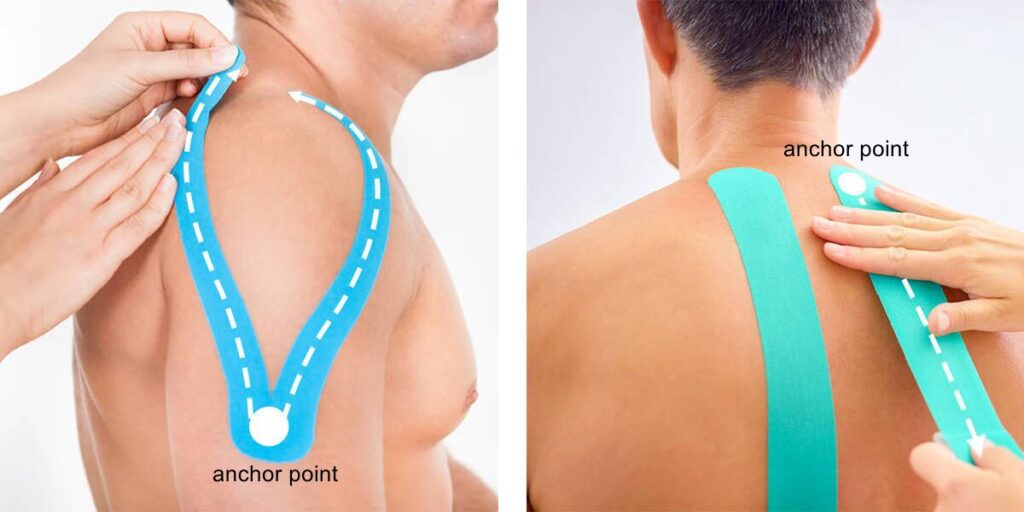
After attaching the “anchor point,” peel off the backing at the other end, stretch the tape (usually 20%-30% tension, avoid over-stretching, which affects results), then smooth it along the stretch direction to adhere it.
Now, the muscle support tape on your muscle will produce a retracting force, meaning the tape will naturally retract towards the fixed point (anchor point).
When the tape’s natural retracting direction is the same as the contraction direction of the taped muscle, it assists muscle contraction.
When the muscle support tape’s retracting direction is opposite to the muscle’s contracting direction, it can relieve muscle tension and relax local fascia.

3. Relieve pain
From a neurological perspective, tactile afferent nerves are larger than pain afferent nerves, so increasing the sensory input of tactile afferent nerves can inhibit pain input, thereby reducing pain.
Applying muscle tape can increase the sensory input of tactile afferent nerves, so the muscle support tape has the effect of compressing and relieving pain. It’s like your knee hurts after you fall, but the pain is gone after you rub it with your hands.
4. Correct posture
Tense or weak muscles can easily cause insufficient strength in that area. During exercise, people compensate with that body part, leading to postural problems.
Muscle tape helps adjust muscles’ tension, control posture, and promote coordination.
Or tapes can fix joints in better positions, providing local proprioceptive input to correct poor posture.
How should muscle tape be applied?
Now that you understand muscle support tape let’s look at how to use it.
1. Cutting muscle strapping tape
Muscle tape originally came in individual I-shaped kinesiology tape strips, which can be cut according to symptoms and taping needs, into shapes like I, Y, X, or claws.
Note that for any shape, round off any corners and edges.

2. Taping methods for different shapes
I-shape:
The I is the most commonly used muscle support tape shape, suitable for almost all taping needs, and easy to cut.

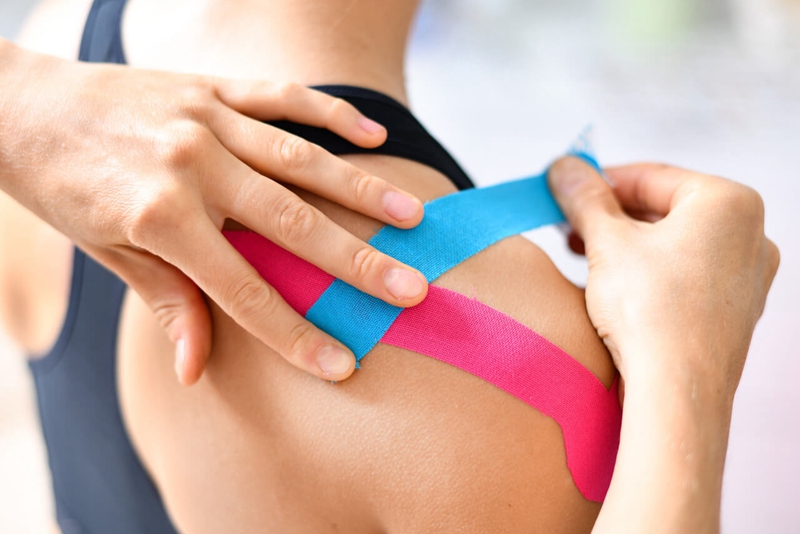
Y-shape:
Y-shapes are often used for larger muscle areas like the gastrocnemius shown.
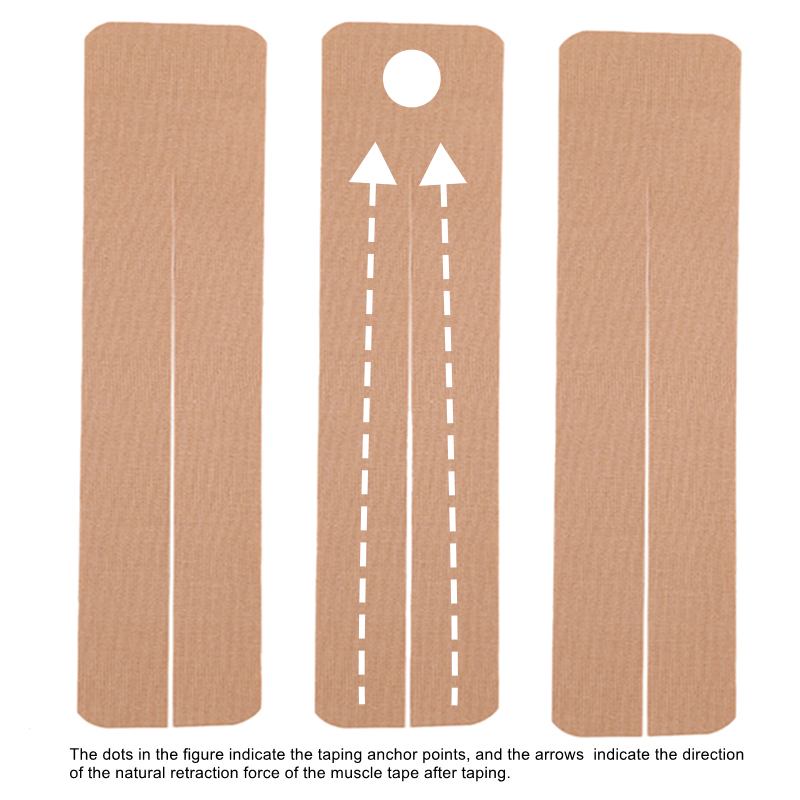
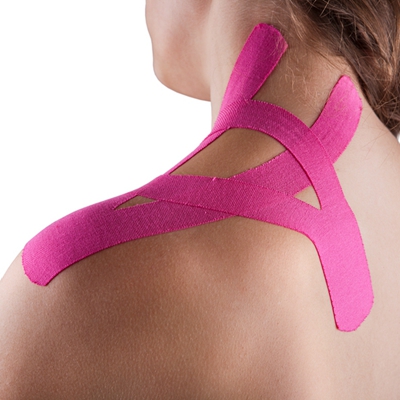
X-shape strips:
The X-shaped strips are often used to treat multiple pain points.
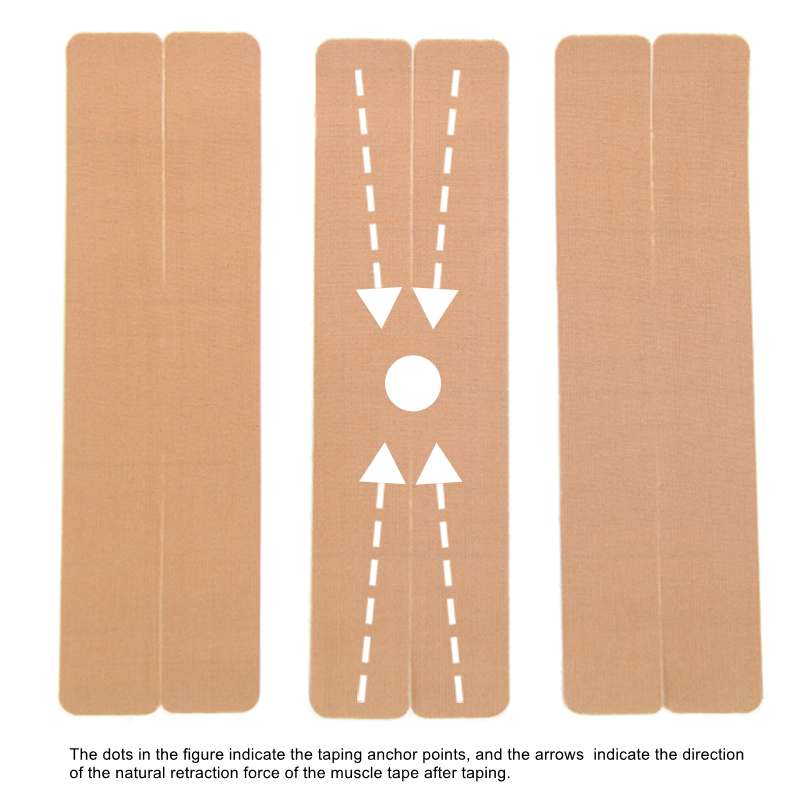
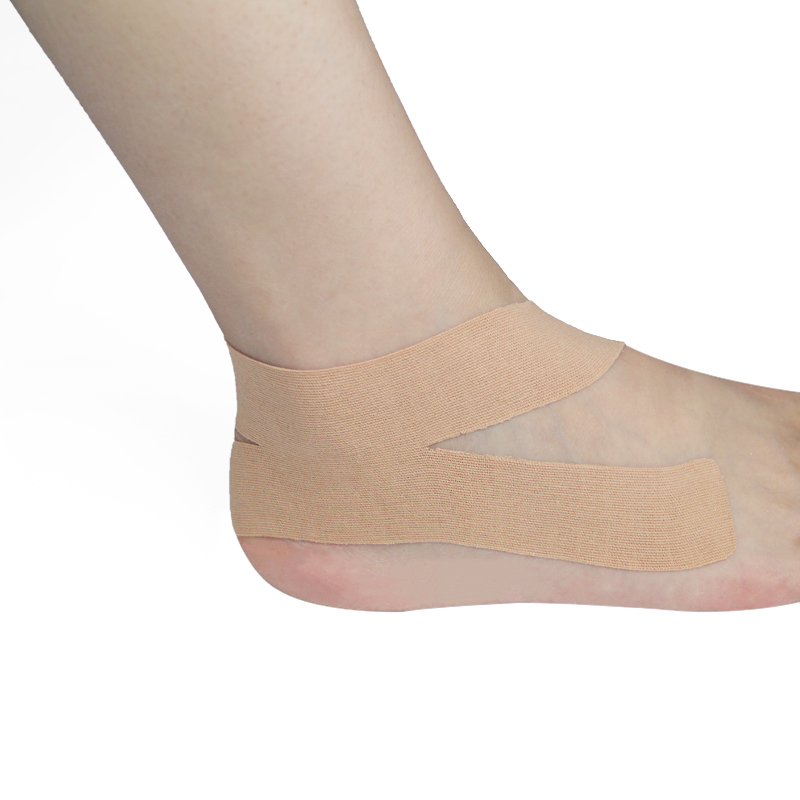
Claw shape strips:
It is often used to improve local circulation relax tissue tension, and edema from fluid retention.

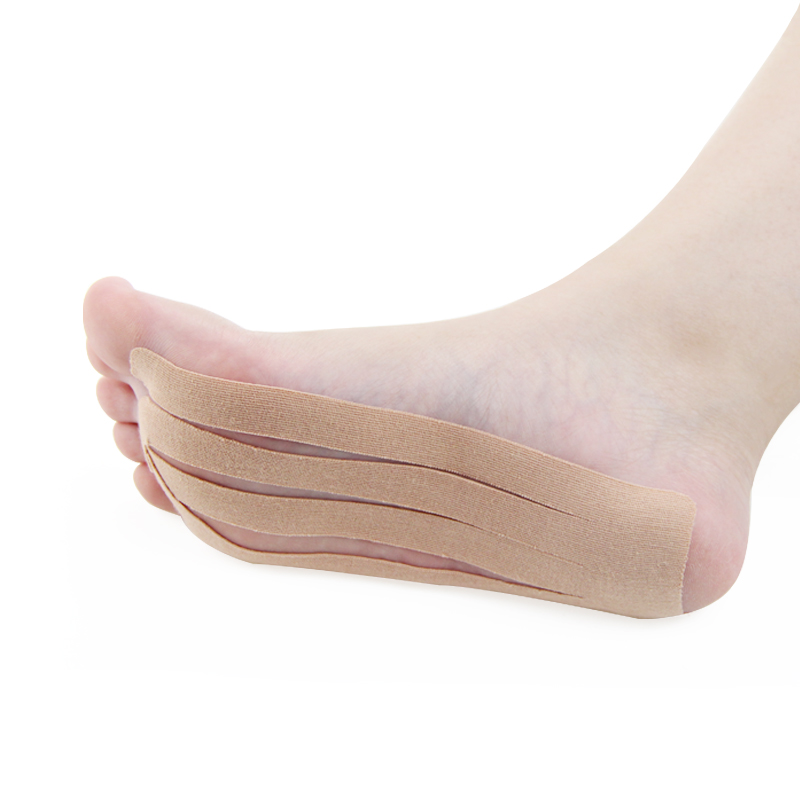
3. Taping preparation
1. Assess the problem and confirm symptoms and taping needs for the area.
2. Determine the taping method to address the issue (support, relaxation, pain relief, reduced swelling, correct posture, etc.).
3. Measure the required tape length for the area (varies individually, cut to length).
4. Cut the shape according to taping purpose (I, Y, X, claws, etc).
5. Stretch the target muscles before taping.
This effectively lifts the epithelial tissues to form skin folds, increasing space between the skin and subcutaneous tissues. It enhances circulation and flow of the fascial system.
4. Basic kinesiology taping application
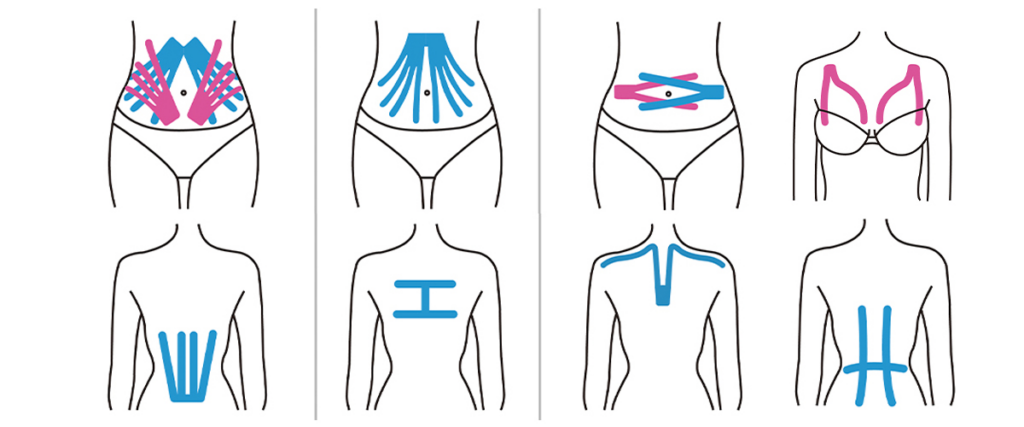
1. Determine the starting end of the tape-skin contact (the “anchor point” mentioned earlier) to decide the taping direction.
The muscle tape’s elastic recoil force determines the taping direction.
2. Peel off about 5cm of backing from the middle of the anchor point.
Note: Avoid touching the adhesive area to prevent affecting results.
3. After securing the anchor point, stretch the tape in the desired direction while the other hand smooths the tape along the stretch direction to adhere to it.
4. The adhesive is heat-activated, so rub repeatedly along the taping direction to maximize adhesion to the skin.
Did this popular science about muscle tape help you better understand the principles of using muscle tape?
Everyone also wants to know which part or symptom the muscle tape is applied to? Please click on our blog page to learn more about kinesiology tape.


